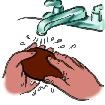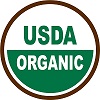Pesticides and Food
People may have concerns about pesticides and the food they eat. Pesticides are chemicals that are used by the farming industry to control a variety of pests and play a significant role in making a wide selection of vegetables, fruits and grains available throughout the year. As crops are harvested, transported, exposed to light, washed, and cooked, the pesticide residue decreases considerably, even to undetectable levels. However, trace amounts of pesticides may remain in or on fruits, vegetables, grains and other foods.
Protecting the food supply from harmful levels of pesticide residues requires the continuing attention of various government agencies. The goal of these government agencies is to protect human health by minimizing exposure to pesticides in or on food. The U.S. Environmental Protection Agency (EPA) determines whether a pesticide can be registered or approved for use in the United States and sets limits on how much of a pesticide residue can remain in or on food (also called "pesticide tolerances"). The Food and Drug Administration (FDA) and The U.S. Department of Agriculture (USDA) share responsibility for monitoring levels of residues on food. The FDA enforces pesticides tolerances for all food produced in the U.S. and food imported from other countries. The USDA monitors meat, poultry and some egg products. In California, the Department of Pesticide Regulation (DPR) regulates pesticide sales and use and has the largest state program to test fresh produce for pesticide residues.
Health professionals agree that no one should stop eating fruits and vegetables based on concerns about trace pesticide residues and that the benefits of eating fruits and vegetables clearly outweigh risks. Eating at least five servings of fruits and vegetables every day along with a variety of other foods is recommended as part of a healthy diet.
The following steps can be taken to help reduce the amount of pesticides in or on foods (Also available at EPA's Pesticides and Food: Healthy, Sensible Food Practices page)
Washing
Wash and scrub all fresh fruits and vegetables thoroughly under running water. Running water has an abrasive effect that soaking does not have. This will help remove bacteria and traces of chemicals from the surface of fruits and vegetables and dirt from crevices. Not all pesticide residues can be removed by washing.

Peeling and Trimming
Peel fruits and vegetables when possible to reduce dirt, bacteria and pesticides. Throw away outer leaves, skins or rinds. Trim fat from meat and skin from poultry and fish because some pesticides residues collect in fat.

Selecting a Variety of Foods
Eat a variety of foods, from a variety of sources. This will give you a better mix of nutrients and reduce your likelihood of exposure to a single pesticide.

Cooking
Cooking helps reduce some of the pesticide residues in food that are not removable by washing or peeling.

Buy Organic
Consider buying food that has been grown using "Certified Organic" methods. Organic farmers do not use synthetic fertilizers or pesticides and do not use antibiotics with animals. While buying organic food doesn't eliminate your risk of exposure to toxins, organic food tends to have very low or no pesticide residues.

*Images courtesy of the EPA and USDA.
Links
- Pesticides - U.S. Food and Drug Administration
- Food and Pesticides - U.S. Environmental Protection Agency
- Pesticides and Food: How We Test for Safety - California Department of Pesticide Regulation
- Pesticide Data Program - U.S. Department of Agriculture
- National Pesticide Information Center - 1-800-858-7378
- Regulation of Pesticide Residues on Food - U.S. Environmental Protection Agency




